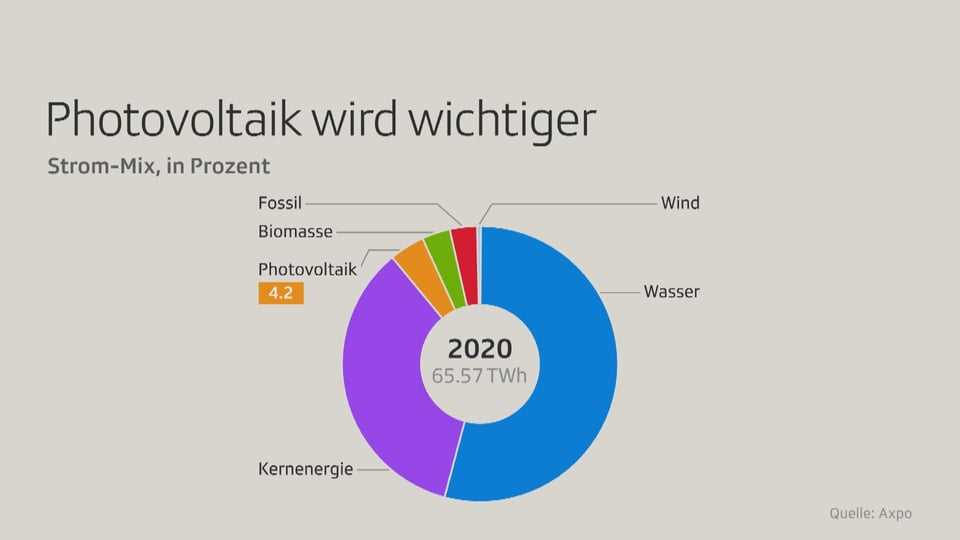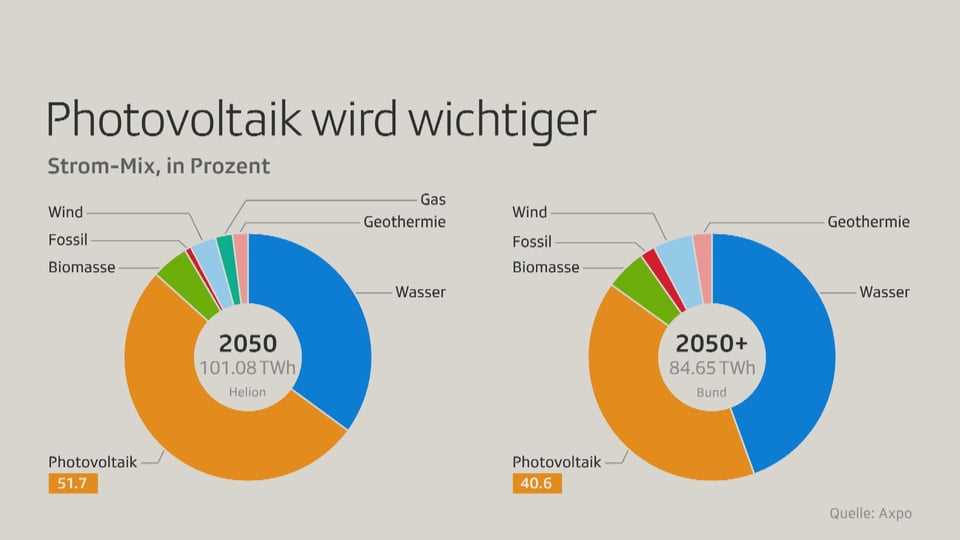contents
The future energy mix includes more photovoltaics. She sees a new extreme scenario as the solution to all problems.
Today, solar systems in Switzerland supply around 4 percent of Swiss electricity. In 2050 it should be more than 50 percent.
At least that’s how Noah Heynen imagines it. The co-founder and co-managing director of the largest Swiss solar company, Helion, is getting involved in the debate about Switzerland’s energy future.
He says: “In the past, the energy industry and politics have positioned their vision of Switzerland’s energy future. They all actually have something in common: that photovoltaics is a central part of it. And the only ones who have actually never said anything about it are the representatives of the photovoltaic industry.”
His proposal is not surprising for a solar company: to build as many photovoltaics as possible. This is possible without any solar parks in the Alps. The scenario of Helion is as follows:
- Equip a third of all houses, facades, multi-storey car parks, motorway parapets, etc. with photovoltaic systems. This means that there is enough electricity even in winter when there is less sun.
- Converting the excess energy that is produced in summer into methane and hydrogen. Industry and the aviation industry would have a great interest in this in the future. If required, combined heat and power plants (CHP) could also be operated with the excess energy.
- Using electric cars as storage. The car industry is increasingly offering electric cars whose batteries can not only charge energy, but also deliver it. Nissan, Mitsubishi, Kia and Hyundai already have such vehicles on offer. Volkswagen announced in December that the technology was about to be launched on the market.
According to calculations by VW and Helion, electric cars could one day provide storage capacity for the current output of all nuclear power plants in Switzerland combined.
picture gallery
How do you rate this model? “I think that’s a realistic scenario,” says Rolf Wüstenhagen. He is a professor for the management of renewable energies at the University of St. Gallen.
“It’s ambitious, but we’re talking about a scenario in 30 years. If we think about what has happened in other areas in the last 30 years: In 1992 I still didn’t write an e-mail, I didn’t have a mobile phone yet. This has spread rapidly. I believe we will see similarly dynamic growth in solar energy.”
Energy specialist Patrick Dümmler from the liberal think tank Avenir Suisse also says: “From a technical point of view, it’s probably something that could be achieved.”
But he points out: “Is that where you want to invest the money? Or are there other technologies that provide a greater yield of energy and, in particular, contribute to security of supply?” Photovoltaic systems delivered on average 10 to 15 percent of the capacity that would be provided.
Expensive isolated solution?
In any case, he is against Switzerland trying to find a solution on its own. She should rather turn back to the EU with regard to an electricity agreement.
“It makes a lot more sense in an electricity grid. Power plants in Switzerland could fail, but power plants abroad are available and can step in to guarantee grid stability. If we solve everything as an island, we can do that too, but at a disproportionately high cost.”
Helion’s Noah Heynen doesn’t see the financial point of criticism. «Photovoltaics are by far the cheapest way to produce energy worldwide and in Switzerland today.»
To build up photovoltaics, he suggests that the network surcharge fund should be able to get into debt. In the longer term, Noah Heynen expects the network surcharge to increase from 2.3 centimes per kilowatt hour to 3 centimes.
Rolf Wüstenhagen from the University of St. Gallen expects additional costs of 30 francs per household per year. He thinks that’s justifiable: “It’s about building a future-proof infrastructure, similar to hydropower in the last century. Of course, these are initial costs that have to be shouldered. But they will benefit future generations.”
Cheaper electricity as an incentive
The question remains how Noah Heynen intends to get so many citizens to install solar panels on their roofs.
He believes the stimulus is already going in the right direction. “More and more rental and financing offers are coming onto the market. This means that the owner no longer needs to make a large investment and he benefits from ‘cheaper electricity’ from day one.»
The future of Swiss energy supply lies in the sun. He has no doubts about that. And business interest, that goes without saying.


